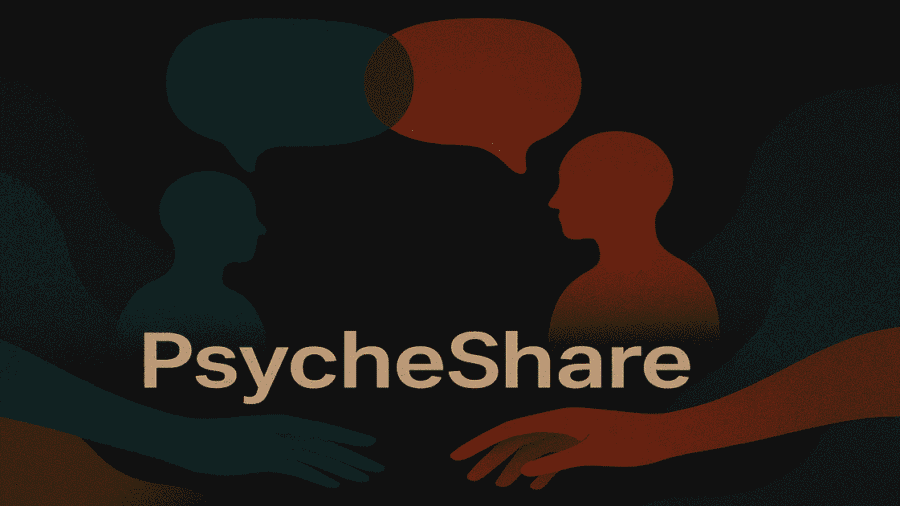At PsycheShare, we are honored to be a space where people can share powerful stories of resilience and healing. Recently, someone reached out to tell us about their friend’s journey, a young woman who face profound challenges during her first year of college.
While the original submission included real names, we have chosen to anonymize the story to protect the privacy and safety of everyone involved. In this story, we call her Emily. Her experience is an honest look at the struggles of dealing with chronic illness, financial hardship, and emotional isolation. We are grateful to share her journey with our community.
The Story
My friend, Emily, had always dreamed of college. The vibrant campus, the late-night study sessions with friends, and the promise of a bright future filled her with hope. But as she stepped into her first year at university, reality proved to be a much harsher teacher.
Health issues began to plague her almost immediately. Diagnosed with chronic fatigue syndrome, Emily struggled to keep up with her classes. The energy she once had seemed to evaporate, leaving her exhausted and overwhelmed. She often found herself sitting in lectures, fighting to stay awake, while her classmates thrived around her.
As her health deteriorated, so did her finances. Emily had taken out loans to cover her tuition and living expenses, but the mounting medical bills became an insurmountable burden. She found herself skipping meals to save money, all the while feeling the weight of her decisions pressing down on her.
Desperate to regain control, Emily made choices that only deepened her struggles. She withdrew from friends, fearing they wouldn’t understand her plight. She neglected her studies, convinced that a few late nights would help her catch up. But instead of achieving success, she faced academic probation. The shame of her mistakes wrapped around her like a heavy cloak.
One night, as she sat alone in her darkened dorm room, the despair reached its peak. Tears streamed down her face as she replayed her choices in her mind. “Is this my karma?” she whispered to herself. The thought echoed, feeding her sense of hopelessness.
Yet, in that moment of darkness, a flicker of light appeared. After a deep breath, Emily picked up her phone and dialed the campus mental health services. It was a small step, but it felt monumental. The voice on the other end was kind and understanding, offering her immediate support and a glimmer of hope.
Through therapy, Emily began to unpack her feelings. Each session revealed layers of guilt and fear, but also resilience and strength. She learned that it was okay to seek help, that vulnerability was a sign of courage, not weakness. As she confronted her health and financial issues, she started to develop coping strategies, setting small, manageable goals.
Slowly, Emily began to rebuild her life. She reached out to her professors, who were more understanding than she had anticipated. They helped her find accommodations to manage her workload. She also connected with peers who were facing their own challenges, creating a support network that replaced her isolation with community.
Each day was still a struggle, but Emily learned to embrace her journey. She understood that while the shadows of her past lingered, they did not define her. Instead, they were lessons—each mistake a stepping stone toward personal growth.
By the end of the semester, Emily had not only improved her grades but also her outlook on life. She learned to celebrate small victories, whether it was attending a class or simply getting out of bed. While the road ahead remained uncertain, she felt equipped to face it, armed with the knowledge that seeking help was a sign of strength.
As she walked across campus one sunny afternoon, Emily felt the warmth of the sun on her face. The weight of her struggles hadn’t vanished, but she carried it differently now. With each step, she reminded herself that healing is a journey, one she was determined to navigate, one day at a time.
Key Lessons from Emily’s Story
- Seeking help is a sign of strength, not weakness: When Emily reached out to mental health services, it marked a turning point in her journey. Asking for help is courageous — and often the first and most powerful step toward healing.
- Struggles do not define your future: Despite facing health, financial, and academic setbacks, Emily’s story shows that mistakes and hardships are not the end — they are part of a larger journey of growth and resilience.
- Isolation worsens suffering; connection fosters healing: Withdrawing from friends deepened Emily’s struggles, but reconnecting with supportive people helped her rebuild her life. Support networks, even small ones, can be lifelines.
- Progress is made through small, consistent steps: Rather than expecting immediate change, Emily focused on small victories — attending class, seeking accommodations, managing her health. Every small step mattered and added up over time.
- Self-compassion is crucial during hard times: Emily’s healing journey involved letting go of shame and guilt. Being gentle with yourself — acknowledging your efforts even when outcomes aren’t perfect — is key to moving forward.
- Financial and academic struggles are valid mental health stressors: Emily’s story highlights how financial pressures and academic difficulties can deeply impact mental well-being. Recognizing this encourages a more holistic approach to self-care.
Reflection Questions for You
- Have you ever found it difficult to ask for help during a challenging time? What held you back, and what helped you move forward?
- How do you typically respond to setbacks — with self-criticism or self-compassion? What would it look like to be kinder to yourself?
- Who are the people or resources you can lean on when life feels overwhelming? How might you strengthen your support network?
- In what ways have financial, academic, or health pressures impacted your mental well-being? How do you manage these stressors today?
Share your story with the world – click here.
Leave your thoughts and comments on Emily’s journey in the comment section below.



[…] can also come from stories that reflect your experience. In A Journey Through Shadows Of Depression, a writer shares the emotional toll of living with chronic depression—an experience that […]
[…] one visitor writes in A Journey Through Shadows of Depression, healing sometimes begins not with medication, but with the belief that someone cares […]